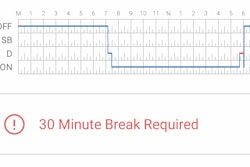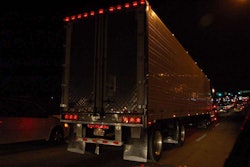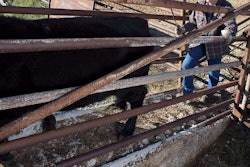
Reader Josiah Gonzalez wrote in last week with a question and a few concerns. He “hauls ag products — grain, fertilizer, animal feed, feed ingredients” and the like, he noted, asking also whether the FMCSA’s electronic logging device mandate would apply to his business, likewise that of the related livestock business:
Do you know if there will be any ELD exception for agriculture and livestock? I haul ag products and we sit for hours, sometimes as many as eight, to get unloaded and loaded. This will be a big problem when you consider what all industries depend on this one. I don’t think anyone has really considered what making all trucks go ELD will do and all the problems it will cause. There isn’t enough parking now. —Josiah Gonzalez, via email
As for the exemptions available today: As we’ve noted elsewhere, there is no industry/segment-specific exemption in the final rule on electronic logging devices, but if you’re operating under any of the short-haul segments such that you don’t keep logs for more than eight days in any 30-day period or own a pre-2000 model year truck, you won’t need to utilize an ELD come the end of the year (Dec. 18, to be exact). That, of course, assumes there isn’t a delay in implementation or some more dramatic reversal of the rule.
As for the necessity of driving to find parking when out of hours at a shipper or receiver’s dock, ELDs do have a personal conveyance mode, which will yield a status of off-duty, and if you’re not logged into the ELD and drive the truck, an “unassigned driving” event will be recorded, which can be reconciled later when logged back in as personal conveyance or whatever status is appropriate.
However, personal conveyance use in the hours rules is explicitly limited by regulatory guidance that requires personal trips to be unladen — without a load [CORRECTED ON MARCH 2 — READ THE STORY AT THIS LINK FOR MORE]. Unless FMCSA revises this guidance, the letter of the law won’t help many situations of dock delays exhausting the daily 14-hour maximum, unless you can leave a loaded trailer on the premises and return in the morning. At once, Delaware-based TCRG Consulting‘s Richard Wilson notes some wiggle room with most reasonable state/federal enforcement personnel. Using personal conveyance to get to a safe haven with a load in such a case isn’t so far out of bounds that it would result in a significant consequence for an owner-operator or small fleet that had to do it on occasion. “If you have an honest explanation for certain situations, the DOT’s not out to get you unless you’re really” overstepping the bounds of the rules, he says. With an ELD, the key will be to use your administrative/management account to make the appropriate notation “that you went to the Pilot truck stop 15 minutes from the shipper,” for instance, Wilson says. “You take that truck to the Pilot and you have directly 10 hours off-duty.” Describe the situation — “I got loaded, I was here. Then I’m at a truck stop, I had 10 hours. DOT is not going to look at that as cheating or breaking the law. It’s not like you’re trying to cheat” when you sat 8 hours waiting to get loaded.
For drivers employed by or leased to fleets, not self-dispatched, the carrier will need to enable personal conveyance for the ELD system you’re using — you’ll do it with your own admin account if you’re an independent. Some carriers approach it differently, and there’s evidence that some of the more hours-focus-heavy states are less than understanding with regard to much use of personal conveyance.
Nonetheless, Wilson says he’s defended such in audits with DOT officers, with success, adding, “Where they’re going to bust you is if it’s chronic [showing a pattern] or acute [i.e. egregious and obvious cheating] and the company doesn’t give a sh** and neither do the drivers.”
Nonetheless, Gonzalez’s broader point about parking/detention and wasted on-duty hours has been echoed from all corners of the industry since and before the ELD final rule was released in December of 2015.
“All theses commodities’ shippers and receivers,” Gonzalez added in his letter about the ag-products operation in which he runs, “have a tendency to have long lines. I waited in line at a port just this last week that stretched a mile long. I was bringing grain in and taking fertilizer out. Was there from 3:30 p.m. to 8 p.m. and ran out of hours at the last minute. When I was running an end dump, I was on an ELD and sat in a line for 6 hours once and ran out of hours on the scale while being loaded. I made one drop that day at 30 cents a bushel [average 885 bushels per load]. By wasting time in line I lost money that day. This ELD mandate will put small fleets and owner-operators out of business. But then again, that’s probably what they want. I am a family guy. Four kids at home, my wife homeschooling our kids and an aging widow Mother that I support. And I know that many other small-time guys have the same situation or worse.”
Following last week’s reporting on livestock haulers’ pursuit of a liberalizing of hours rest-period regs to resemble what specialized oilfield haulers enjoy, many readers noted a special carve-out for those haulers might best be applied to all live-loaders, given the issues that Gonzalez and others note. Wrote one, commenting under last Friday’s piece on the livestock effort, “All live load and unload situations — including flatbed, hopper, dry vans and etc. — should have a different set of rules to add a bit of flexibility. The HOS and ELDs are designed for the drop-and-hook operation of the mega carriers, and gives them an unfair advantage over the independents in the live-load market.”
Read further commentary via that the story at the following link:









